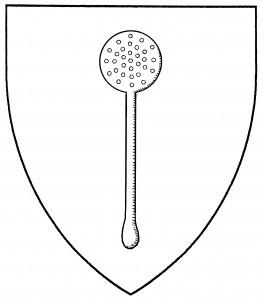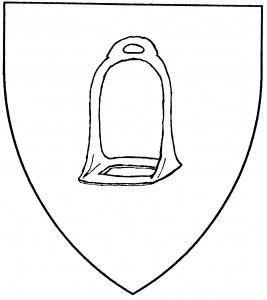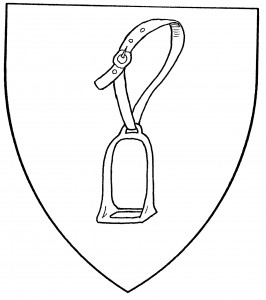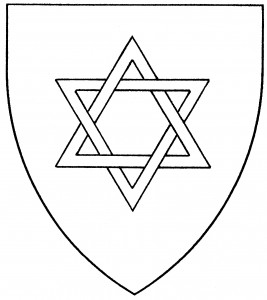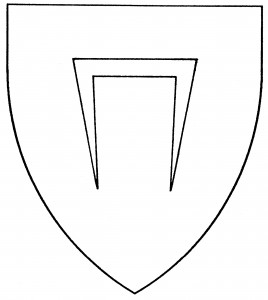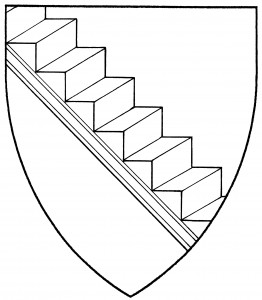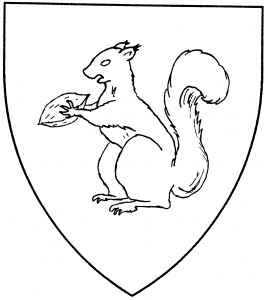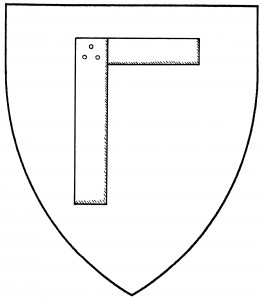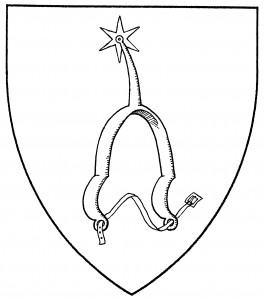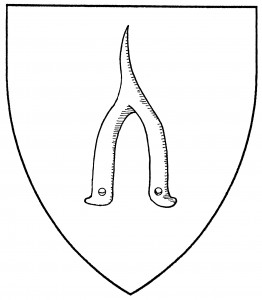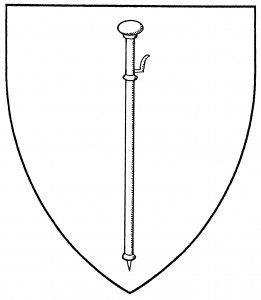
Bourdon, or pilgrim’s staff (Period)
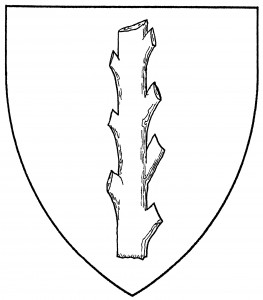
Ragged staff (Period)
A staff is a wooden pole, which might be used as a support or a weapon. The unmodified term is rendered in Society armory as a simple, smooth pole, also known as a “rod”; but two other forms of staff are more prevalent in period armory.
The “bourdon” or “walking staff” is drawn with a handhold on its tip. It was frequently drawn with a hook as well, for carrying a bag of belongings, and might then be blazoned a “pilgrim’s staff” or “palmer’s staff”; the terms are essentially synonyms. The bourdon is found in the canting arms of Burdon, c.1285 [ANA2 221].
The “ragged staff” is a thick staff with raguly sides, like a tree trunk with the side-limbs lopped off. This form dates from c.1360, in the arms of von Lipe or Leipa [Gelre 33v], but is most famous as an element in the badge of the Earls of Warwick, 15th C. [HB 155].
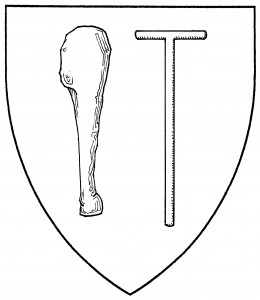
Club (Period); crutch (Period)
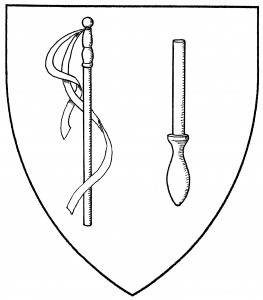
Ambassador’s staff (Accepted); belaying pin (Accepted)
Other types of staff in period armory include the “club” (also called a “shillelagh” in the Society), a length of wood with a burl at the top, used as a cudgel; it’s found in the arms of von Keul, 1605 [Siebmacher 72]. There’s the “crutch” or “crutchstaff” (also, poetically, called a “potent”), found in the arms of di Scanci, mid-15th C. [Triv 331]; it comes in varying forms depending on era, with the illustration being typical.
Of the staves unique to Society armory, there are the “herald’s staff” or “ambassadorial staff”, a short staff with ribbons; the “belaying pin”, used on sailing ships to secure lines and quell mutinies; the “jester’s bauble”, a short stick with a miniature jester’s cap on its end; and the “wand”, a term implying a more naturalistic drawing, perhaps with a leaf or two.
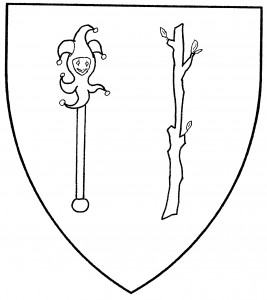
Jester’s bauble (Accepted); wand (Accepted)
All staves are palewise by default. Their “proper” coloration is brown, the color of wood. (The exception is the jester’s bauble: when blazoned “proper”, it’s shown with a Caucasian face and a brown wooden handle; the colors of the cap must be explicitly blazoned.) For related charges, see bend (baton), caduceus, crozier, distaff, juggler’s clubs, mace, scepter, slip (branch), thyrsus, torch (firebrand). See also golf club, pole-arm, spear.
The Ambassador of Atenveldt bears: Per pale azure and argent, in canton a sun in his splendour Or, in sinister base two ambassadorial staves in saltire azure.
Ivan Dragonstone bears: Purpure, on a chief erminois a rod fesswise argent.
Addison the Wanderer bears: Potent, two palmer’s staves in saltire Or.
Bertrade Deslapins bears: Or, two ragged staves in saltire sable.
Georgis Ker bears: Or, a wooden club bendwise proper.
Catriona the Lame bears: Argent, a crutch sable within a bordure azure.
Dianna Wyndalan of Kidwelly bears: Barry wavy sable and gules, in saltire a belaying pin and a sword argent.
Quin of the Eastern Harhar bears: Argent, a jester’s bauble gules and in chief four golpes in arc.
